Adam Fabrikant finds subtle refinement in Scarpa’s newest iteration in the F1 lineup—the F1 XT. Stiff, comfortable, and light = a Fab go-to.
The Stiffest boot that Scarpa markets in their “Tour Lite” lineup,
Scarpa has been an Italian shoemaker since the beginning of time, well 1938. Unlike many companies that decide to reinvent the wheel year after year, Scarpa refines their products. In 2018, Scarpa released the ever-popular Alien RS: a game changer. The upper and lower use carbon-infused Grilamid—the lower secures with a BOA closure, while the upper utilizes a skimo race-inspired tightening/loosening system to transition from walking to ski. For those used to a single throw along the spine that tensions the Dyneema cord, it remains a svelte and simple system for missions way way way beyond any skimo course and deep into further afield objectives.
Many long years ago, the Scarpa F1 was the race boot, period. It was the main boot on the feet of rando racers worldwide. As time passed, Scarpa understood the appeal to the community—they’d made an entire lineup of F1-oriented boots. The F1 XT, which I’m reviewing here, was originally born out of the Alien RS, which morphed into the F1 LT, and now…here we are. Just to keep the phylogenetic tree of Scarpa’s lightweight boot series straight, here’s a brief recap.
Scroll through to view the F1 boot models evolve from the F1 to F1 LT to F1 GT, and F1 XT.
- The “classic” F1 tips the scales at 1250g (27) and was perhaps the original boot for the 2+ buckle category. The upper secures with a buckle-velcro strap combo and a skinnier power strap to top it off. The lower fastens with a BOA closure with the ROM labeled as 65º.
- The F1 LT has a claimed flex of 100 and tips scales at ~1050g in size 26. Like the Alien RS, the upper and lower are carbon-infused Grilamid. The lower secures with BOA. The upper battens down with a velcro buckle, while a skinnier velcro tops it off. The ROM bumps to 72º.
- A softer F1 option is offered in the F1 GT. The upper and lower are constructed from fiberglass-infused Polyamide, with a claimed weight of ~1165g in a 27. The lower secures with a z-buckle, while the upper locks in with a buckle (no velcro strap) and a mid-width velcro strap topping it off—the flex rating is 90.
- Enter the F1 XT, released in Europe last winter and here in the U.S. this fall. (I’ve had a pair since last February). The lower is fiberglass-infused Grilamid, and the cuff is carbon-infused Grilamid (like the LT). The lower closes with a single z-buckle, and the upper tightens up with a buckle and single (yet wide) cam buckle power strap. Scarpa calls it a 95 flex. Editor’s note: we note the stated flex values, however, flex values for 1kg boots are better determined by carpet testing, or, better, on snow.
The XT in Brief
Ski boot reviews focus on numbers, weights, and uphill and downhill performance; very exciting stuff here. The F1 XT is a boot that, yup, goes beyond weights. A somewhat “heavy” rando boot at 1145 grams per foot, it is still an uphill boot at heart; it still strides and glides like an uphill machine. So why pay a weight penalty from the world-renowned F1 LT? In 2020, Scarpa added 70 grams to the Alien RS, making the F1 LT—now, with another 70 grams, we have the F1 XT—more weight, more problems, not necessarily. Scarpa still offers race-weight boots for those who want pure uphill advantages, but for those who want an uphill-oriented chassis with a little more beef, the F1 XT seems worthy of a try.
Simply put the F1 XT takes the F1 LT and adds two buckles. The F1 LT, in some ways, is a buckleless boot (crazy, right?)—with the ever-popular BOA holding the heel in place and a large velcro strap acting as its upper buckle. The F1 XT has two traditional buckles, one for heel retention and one above. In short, a more traditional, skiable boot. There is more going on than that, but the one-paragraph review is done.
A Deep Look at the F1 XT
The lower buckle, which the fine marketing folks at Scarpa HQ call a Wave Lite Closure, is a fancy way of saying “z” style buckle (which has become somewhat common on touring boots) that acts as two buckles in some ways. The BOA worked well for me in the past, but a proper lower buckle clamps my heel down better and thus provides a better skiing boot. In an era where BOA is going mainstream on alpine boots, old-fashioned buckles have their place.
The upper buckle is a traditional lightweight buckle; both upper and lower buckles have the option for mico adjustability to dial in the fit. Above the upper buckle is a beefy/ stout, cam-style power strap. The F1 XT seems to be a little better at downhill skiing. Let’s call it an extra 7% of downhill ski ability for an additional 70 grams. That math works for this ski bum.
The ski/walk lever is identical to the F1 LT—it uses a spring to assist the throw action and can get iced up sometimes. But, so can most any gear in winter. It seems to work great for me.
With buckles, the transitions are more involved. There are four steps. That is a lot of steps, less than the six steps for my Tecnica Zero G Tour Pros, but still a lot of steps. My F1 LTs eventually lost their power strap, which made for a simple two-step transition—about as race-inspired as I have ever been.
The four steps: Ski/ walk mode, upper buckle, lower buckle, power strap (I typically hike up the tongue of the liner; should that count as a step?) Still, a pretty streamlined transition if you ask me.
The liner is a Scarpa/ Intuition blend, the Intuition Crossfit Tour LT2, the same liner as the F1 LT. The intuitions are warmer and more comfortable than most liners, in my opinion. For me, it worked great out of the box without a heat mold. It is light at 210 grams (sans footbed, but with stock spoiler). However, the upper cuff and the tongue have a nice rigid feel. The cuff has velcro, and it comes with a built-in adjustable spoiler. The velcro allows you to either make the spoiler higher or lower depending on the height of your calf. I have been using the spoiler thus far and enjoy the forward lean for downhill skiing. I find that a liner like this works well but has a short-lived life. They pack out quickly, and after 30-40 days, I feel like a fresh pair would be nice.
When touring around on these boots, I have been asked many questions about the fit. Is it any better/different than the F1 LT? No. The fit is the same. I can wrap my head around the poor fit, but it feels lopsided with my preference. The toe box feels tight, and the heel feels loose. For a lighter boot, I am okay with this, but for those who did not like the previous fit, nothing has changed. For others that liked the fit, it will still work well.
I have small, skinny feet with a few issues. I have had frostbite on my big toes twice, and I have neuromas—nerve pain in my feet from too much time in boots. The 26.0 fits me well out of the box. If anything, they are probably a little too big, and if I could, I would try on a size smaller to see if the heel retention could be improved but remain long enough to keep my toes happy. My toes can wiggle around freely, which, as a ski tourer trying to log big days, is a trade-off I am ok with.
The main ski I used when testing these boots was a pair of Black Crows Camox Freebird; they are 96 underfoot. I used them in a 172cm, and this pairing worked really well for me. I would use this boot with smaller skis and some wider skis. Around 105 underfoot might be the limit for ideal performance. Anything wider, and I would prefer a larger boot.
I used the F1 XT on the Grand Teton twice last spring with my Camox Freebrids to see how I would like the setup for expedition skiing, and I liked what I found. It inspired me to bring this kit down south to the bigger hills.
This October, I traveled to the Andes in search of adventure, far-flung summits, and the unknown. I have been traveling to ski in the Andes for about 10 seasons and had a good hunch about what I was getting into—long dirt approaches, variable snow, and high desert skiing at its finest. Over the years, I have brought down the full range of gear, but this year I knew I wanted to go a little leaner as our objectives warranted 70-pound packs.
The F1 XT was my boot of choice, and I was very content.
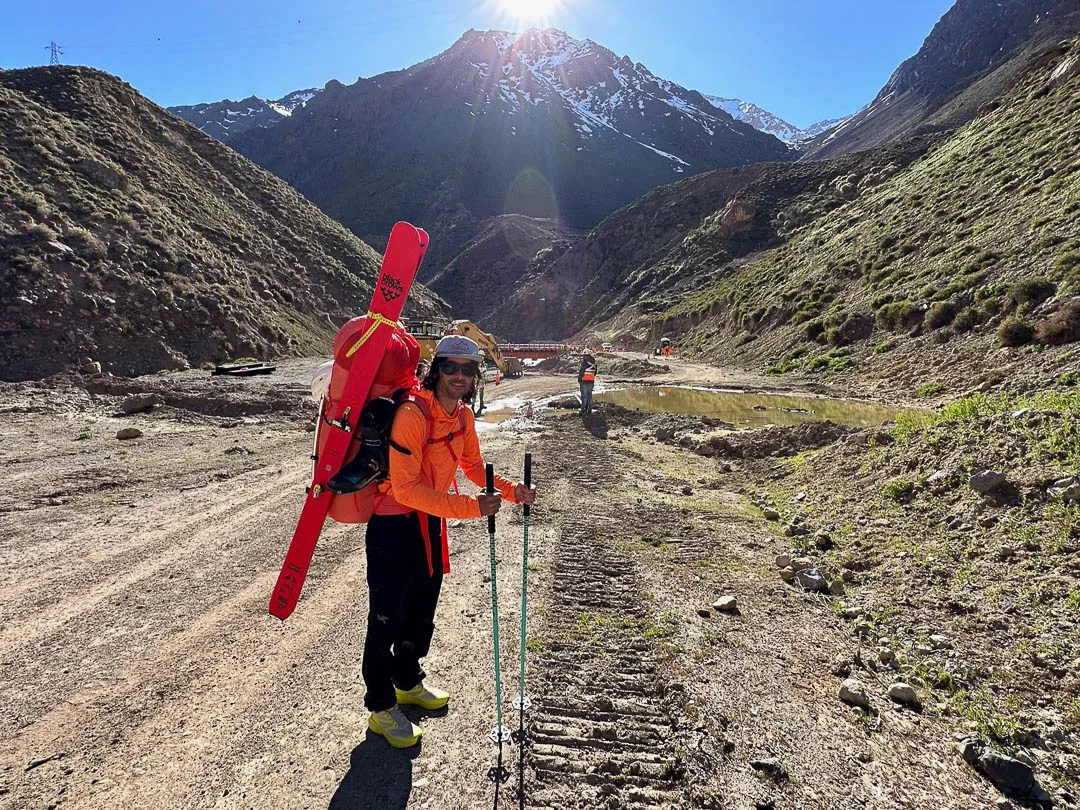
As a lighter boot, the Scarpa F1 XT serves the author well—strapped to his back—as he approaches a ski objective deep in the Chilean Andes. Photo: Billy Haas.

Still approaching—and glad the boots are relatively svelte despite the pack’s immense heft. Photo: Billy Haas.
Over 15 days, my partner and I made long multi-day valley approaches, front-pointed up firm alpine faces, and skied endless amounts of challenging, variable snow. The XT excelled. I had long days in the mountains and had comfy feet each evening. Challenging technical climbing, and I felt confident with my ability to lock my heel in with the lower buckle with the boot still in walk mode. I sometimes secure the upper buckle for long burns of front pointing. Downhill skiing felt confidence-inspiring, and the torsional rigidity that I crave when making steep hop turns was there. All in all, I was pleased with my expedition gear selection and will continue to use this boot for my far-flung skiing exploits.
So, what is the main difference between the F1 LT and the F1 XT? Not much. As I mentioned earlier, the fundamental difference is buckles instead of BOA and velcro in the closure systems. For multiple seasons, the F1 LT has been my go-to boot for challenging technical ascents and descents: long traverses and hard alpine climbing. With a desire to take social distancing seriously during the height of the Covid pandemic, those boots walked through the Wind Rivers with me during a solo across the range. The F1 LT was on my feet climbing the technical rock and ice of Denali’s Cassin Ridge, too. The new F1 XT appeals to me more as it walks just as well, climbs just as well, and skis better for a pretty minimal weight penalty.
Is there a need for both of these boots? Of course, it is nice to have options; however, to me, both of these boots fill the same niche. I own both of them and use the F1 LT for my smallest skis, but for everything else I previously skied on the F1 LT, I have switched to the F1 XT.
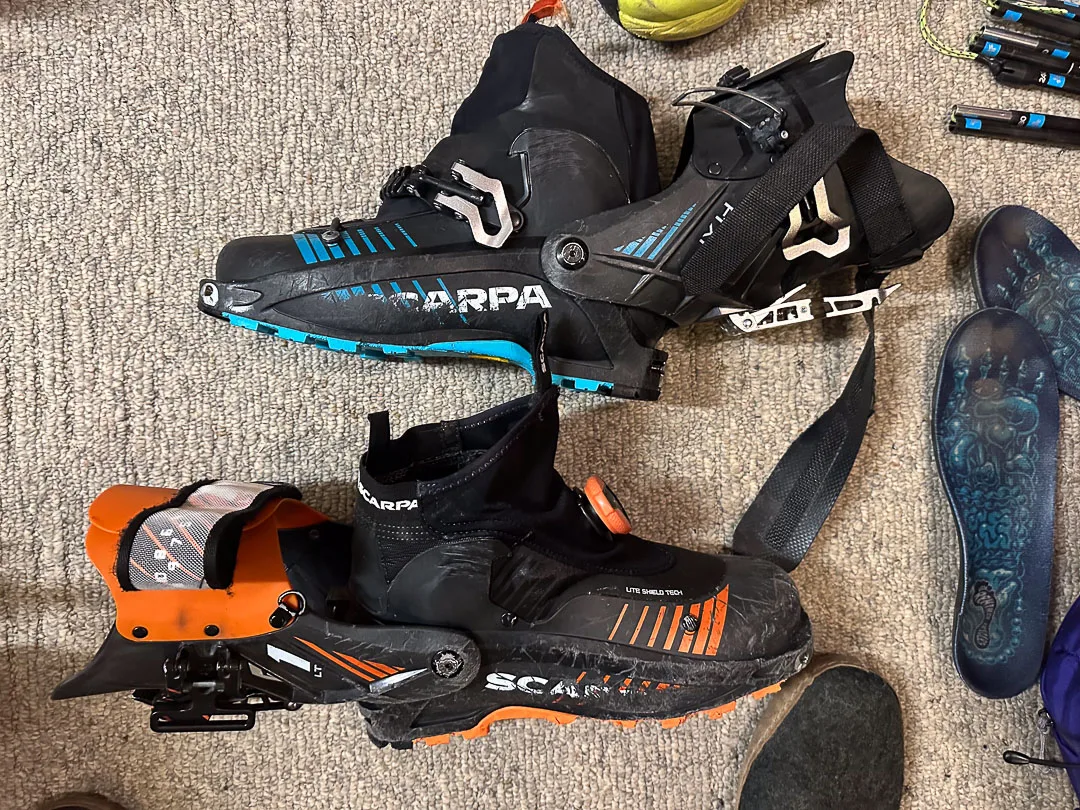
The F1 LT (below) and the F1 XT above: similar chassis, gaiter, and genera;; design/engineering, with a different retention system.
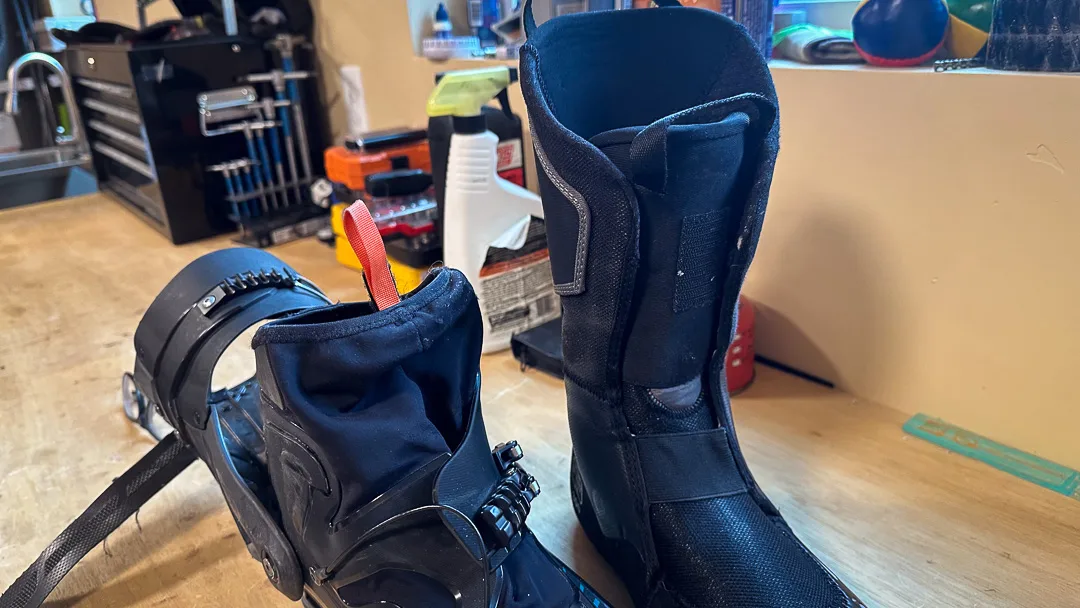
The Intuition liner offers ample support, warmth, and modulability. The liner slides into the gaiter to help create a warm and comfy environment for the feet.
For durability, this is still a minimalist boot; the gator seems much more durable and water-resistant. I have already torn through where the gator meets the boot, as I did on the F1 LT, but I expect this as this area sees a lot of friction. Besides this relatively small issue, I have not broken the boots yet. This is rare and speaks volumes about the boot’s durability.
For a small guy, I seem to be skilled at destroying expensive ski kits.
It is somewhat challenging to highlight a significant difference between the XT and its predecessor. This might seem odd to some, but to me, it is all about refinement. Scarpa is not trying to make major innovations with every new boot; they are trying to take a mold many people love, tweak it, and then tweak it again. The result is a boot that has been tinkered with for many seasons. The Italian bootmakers should be proud of their years of refinement—the F1 XT is a simple, well-made touring boot. If one wants a beefed-up rando chassis with some freeriding in mind, it is advised to slip on a pair of F1 XTs and see how far you can go.
I look forward to many summits, climbs, and, of course, powder-fueled descents on these boots.
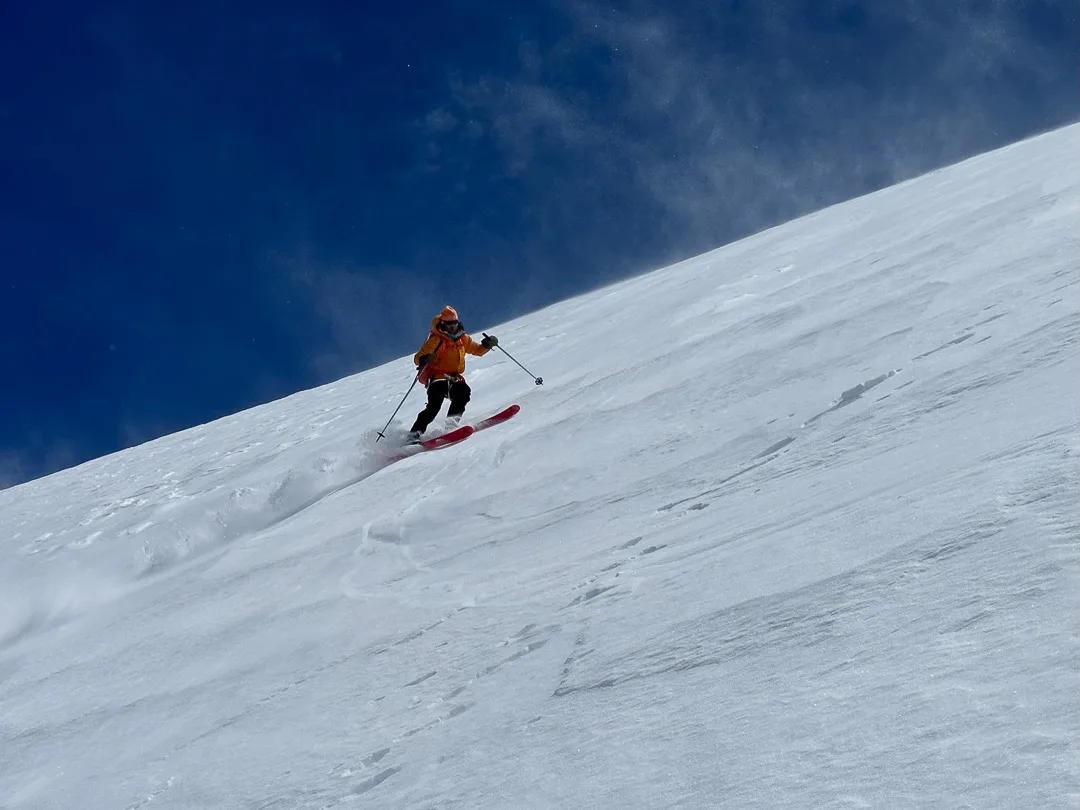
Adam Fabrikant descending an Andean wind-buffed panel on the Scarpa F1 XTs paired with the Black Crows Camox @ 96mm underfoot. Photo: Billy Haas.
Scarpa F1 XT Basics
Size Options: 23-31 (whole sizes)
Weight size 26: 1070g
Range of motion: 72º
Forward lean: 11°/13°/15° +/- 2° with spoiler
Closure system: 2 Buckle Wave Light Closure + Cam Buckle Power Strap
Sole: Vibram® UFO LT
Cuff: Carbon Grilamid®
Shell lower: Grilamid® FG LFT
Ski/walk mode : Speed Lock LT (read basic and functional spring throw)

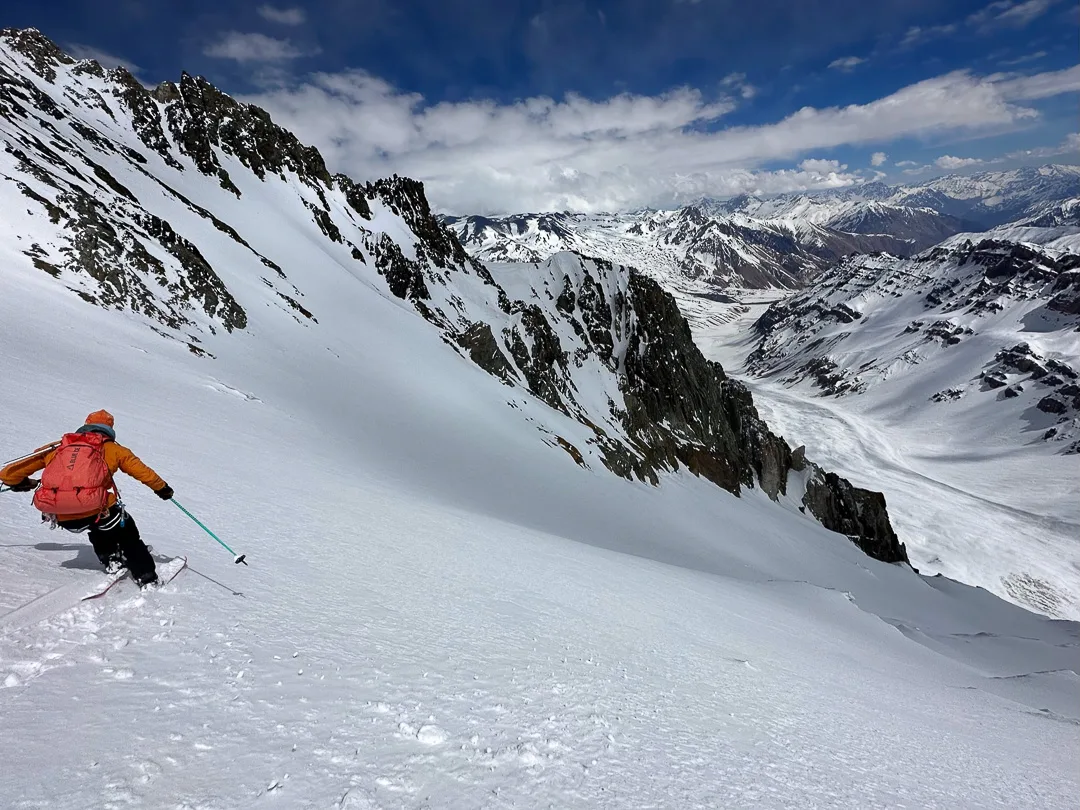
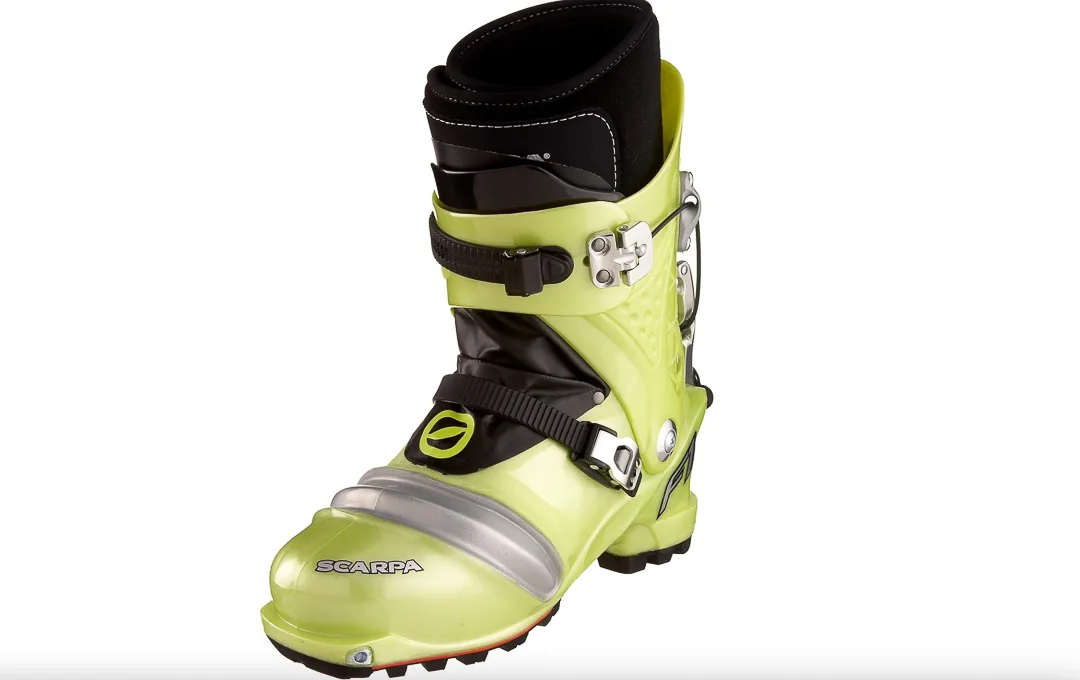
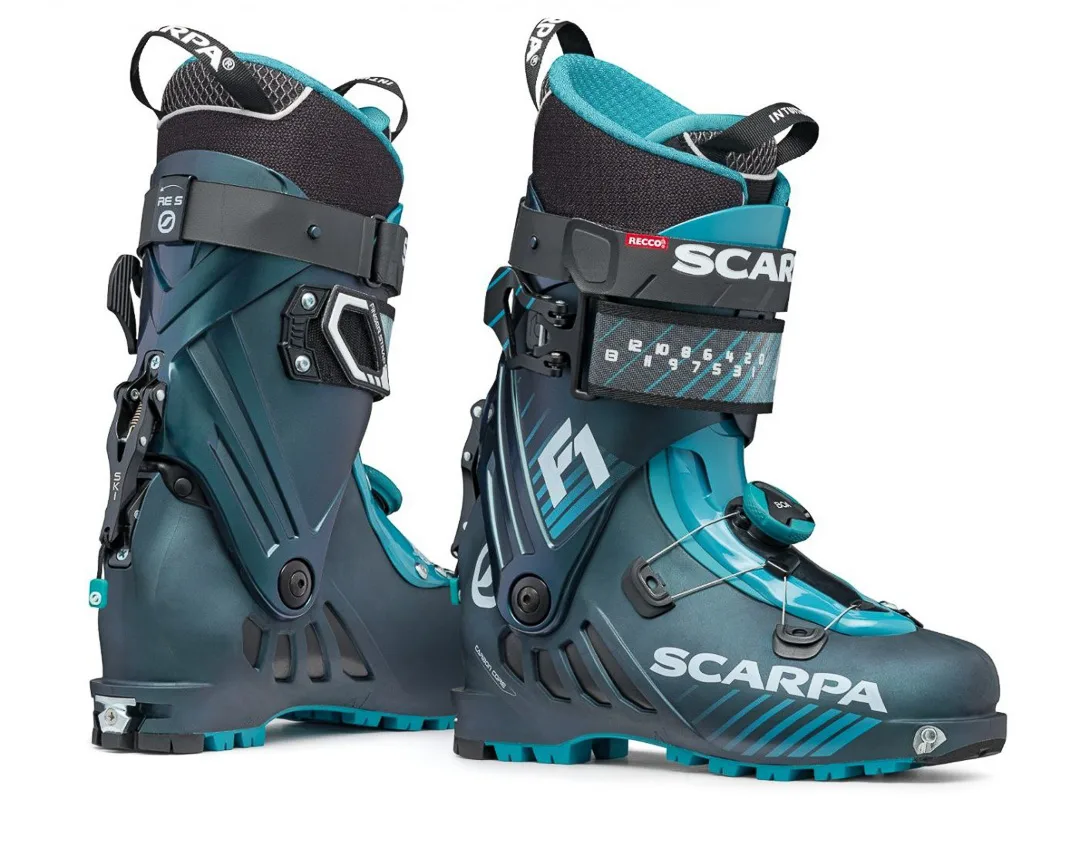
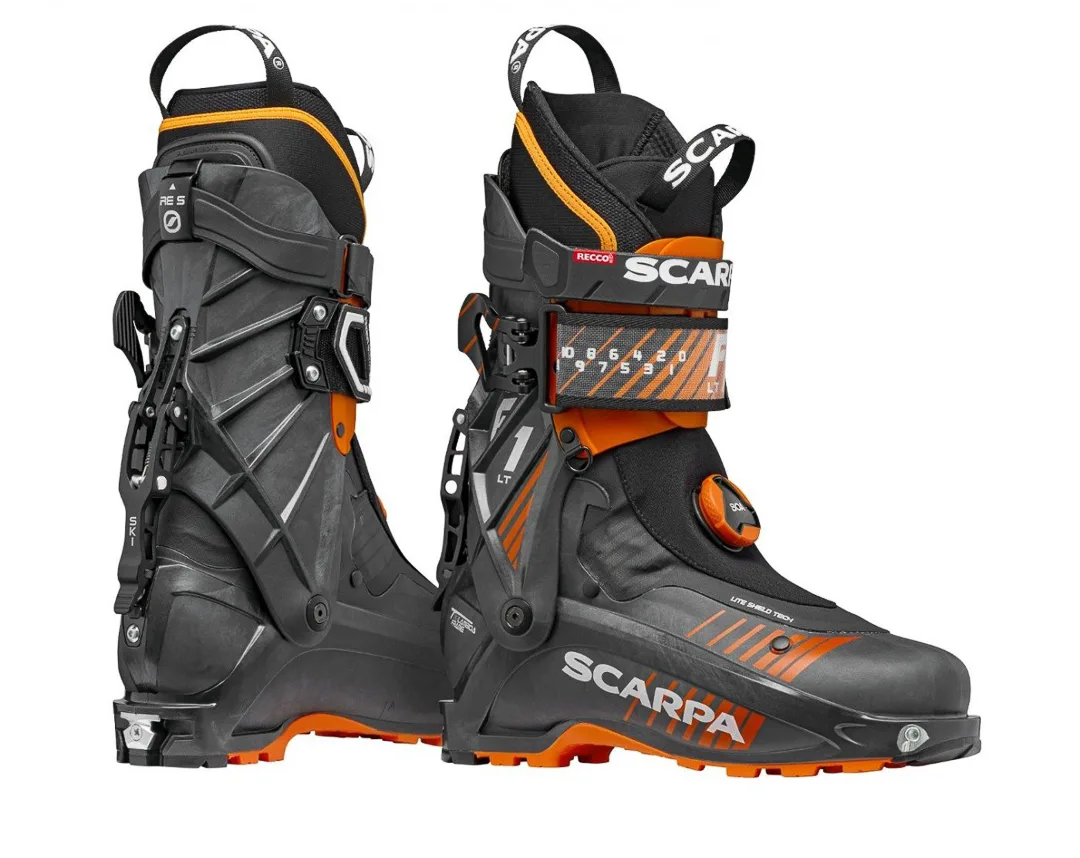
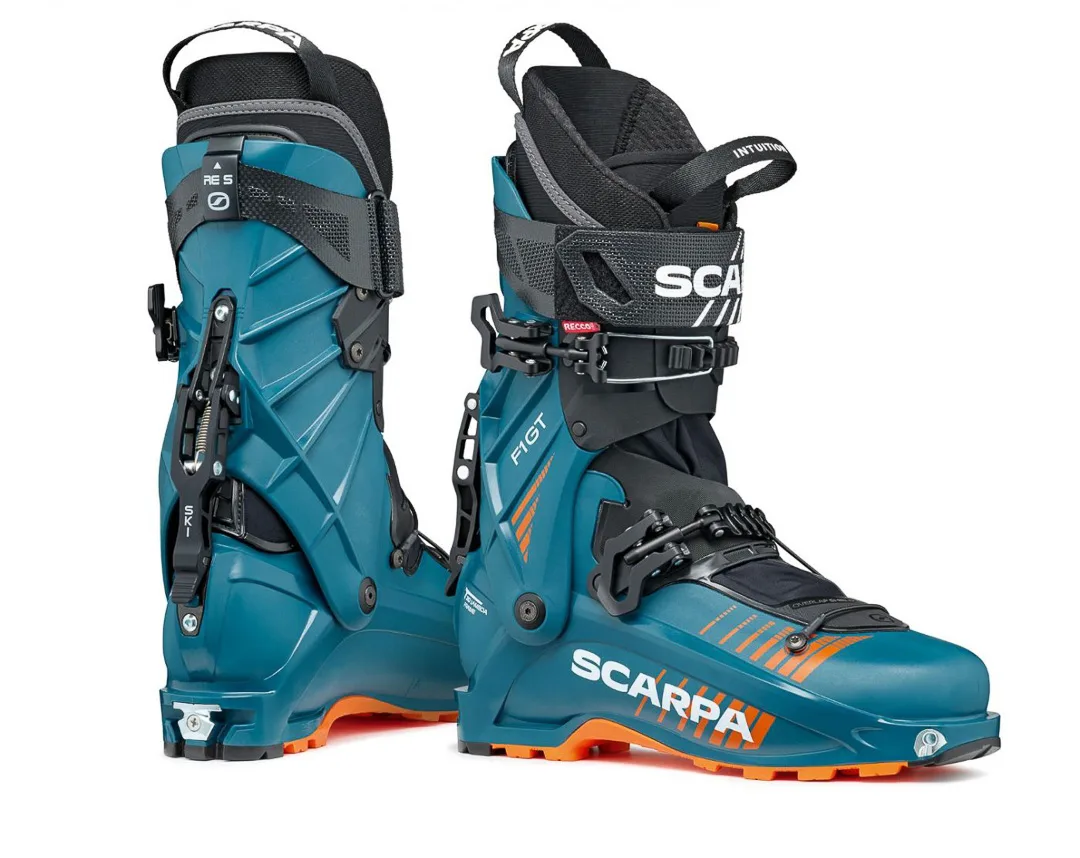
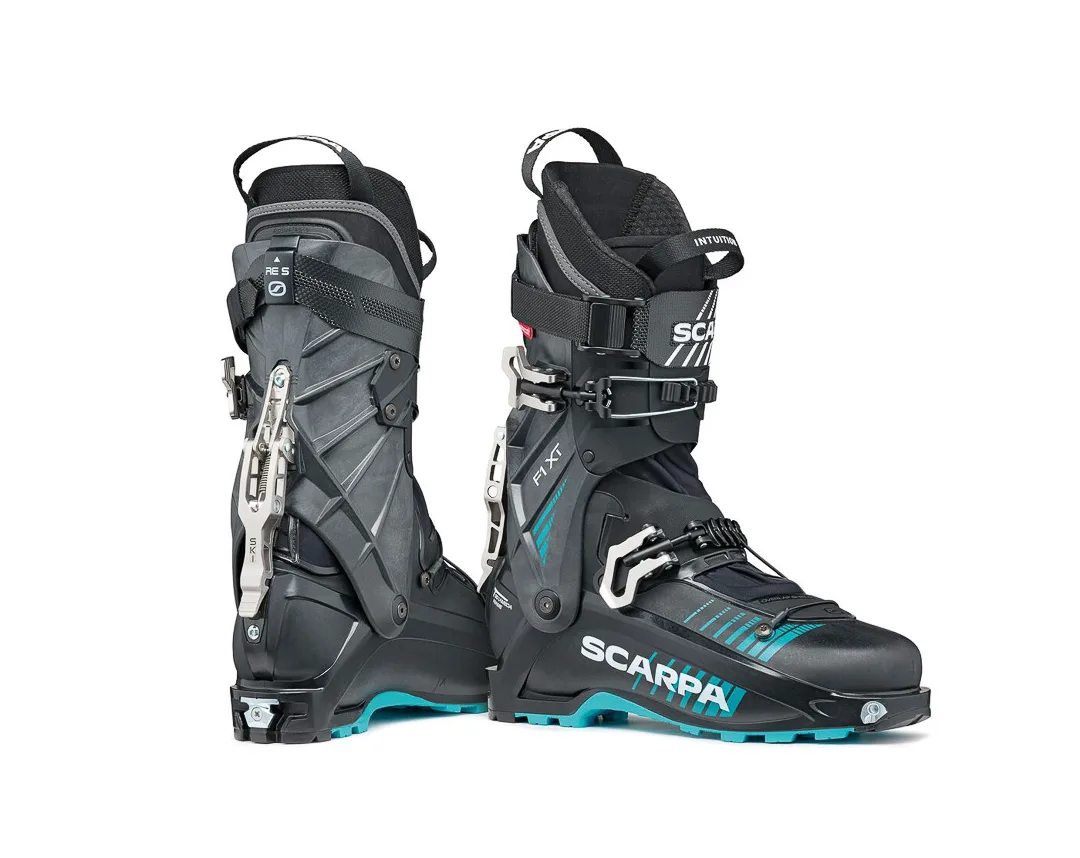
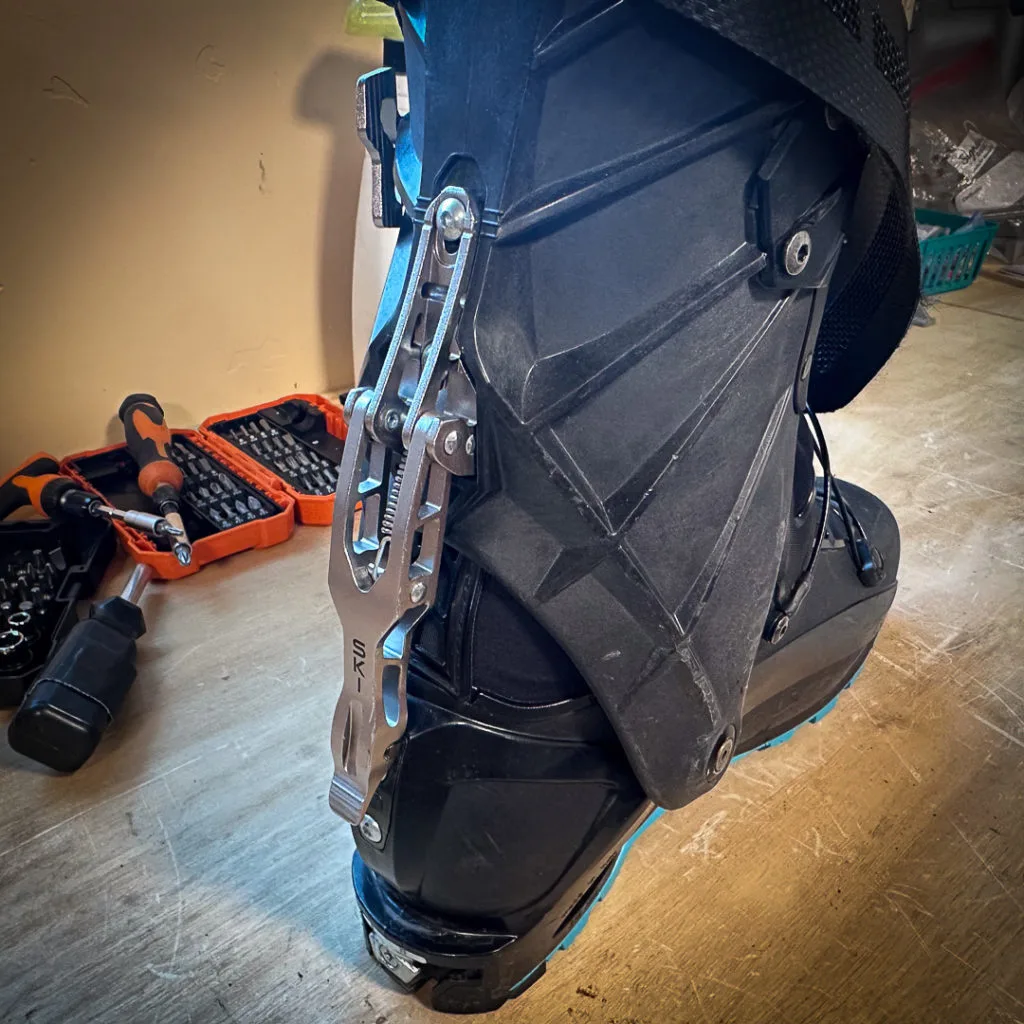
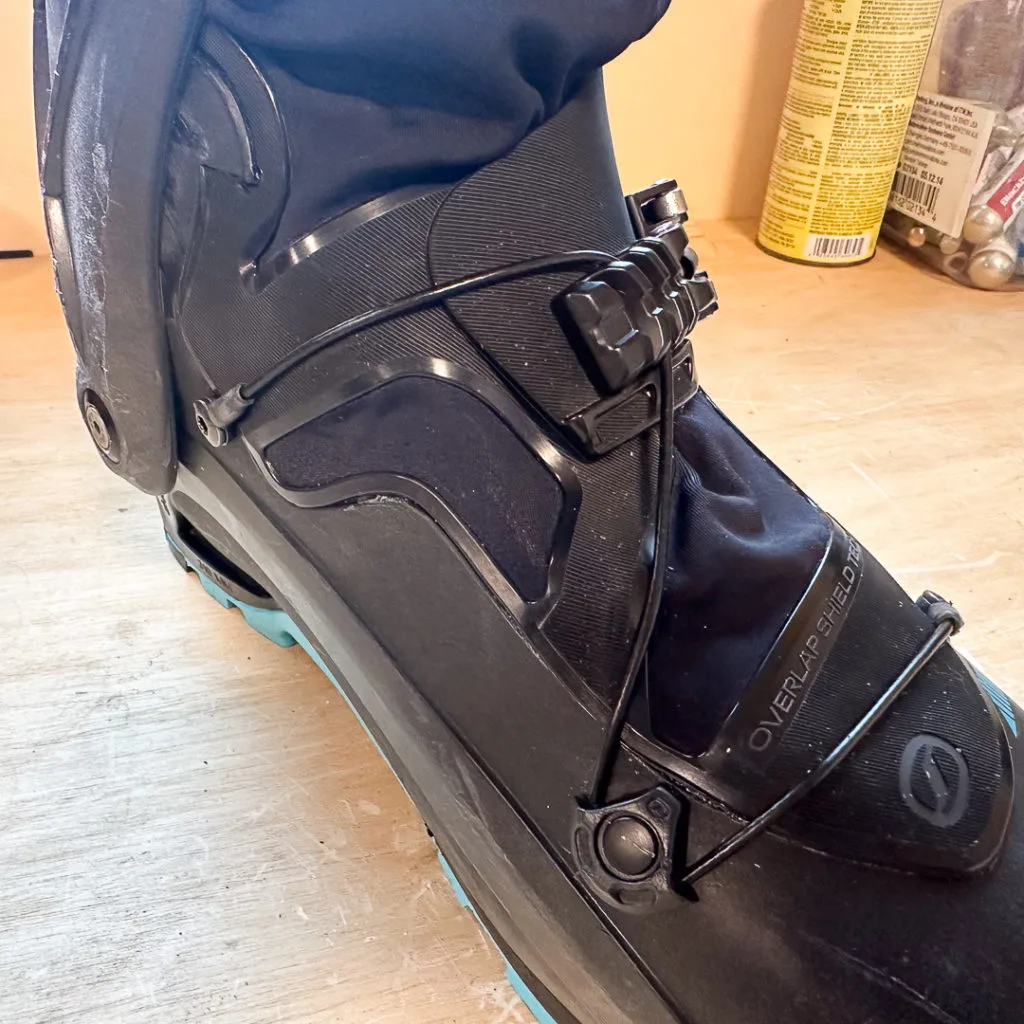
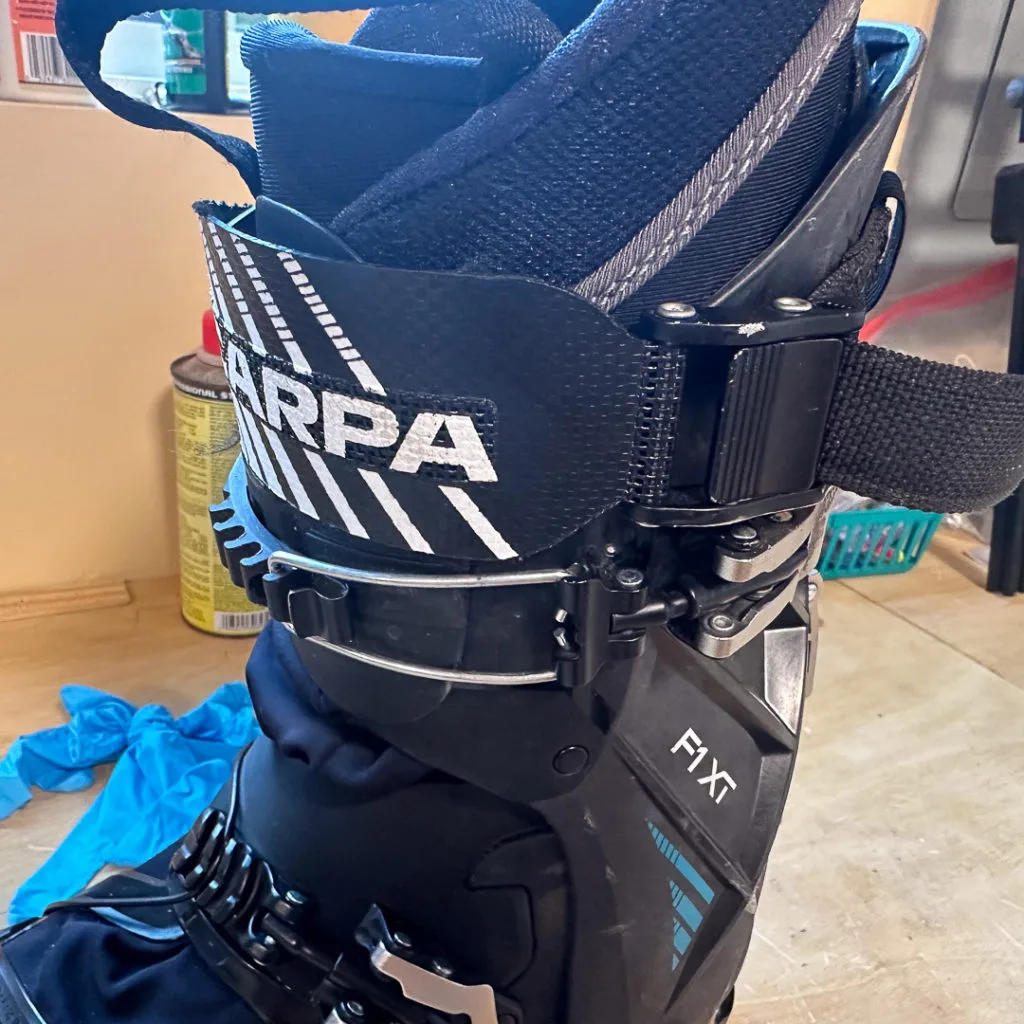
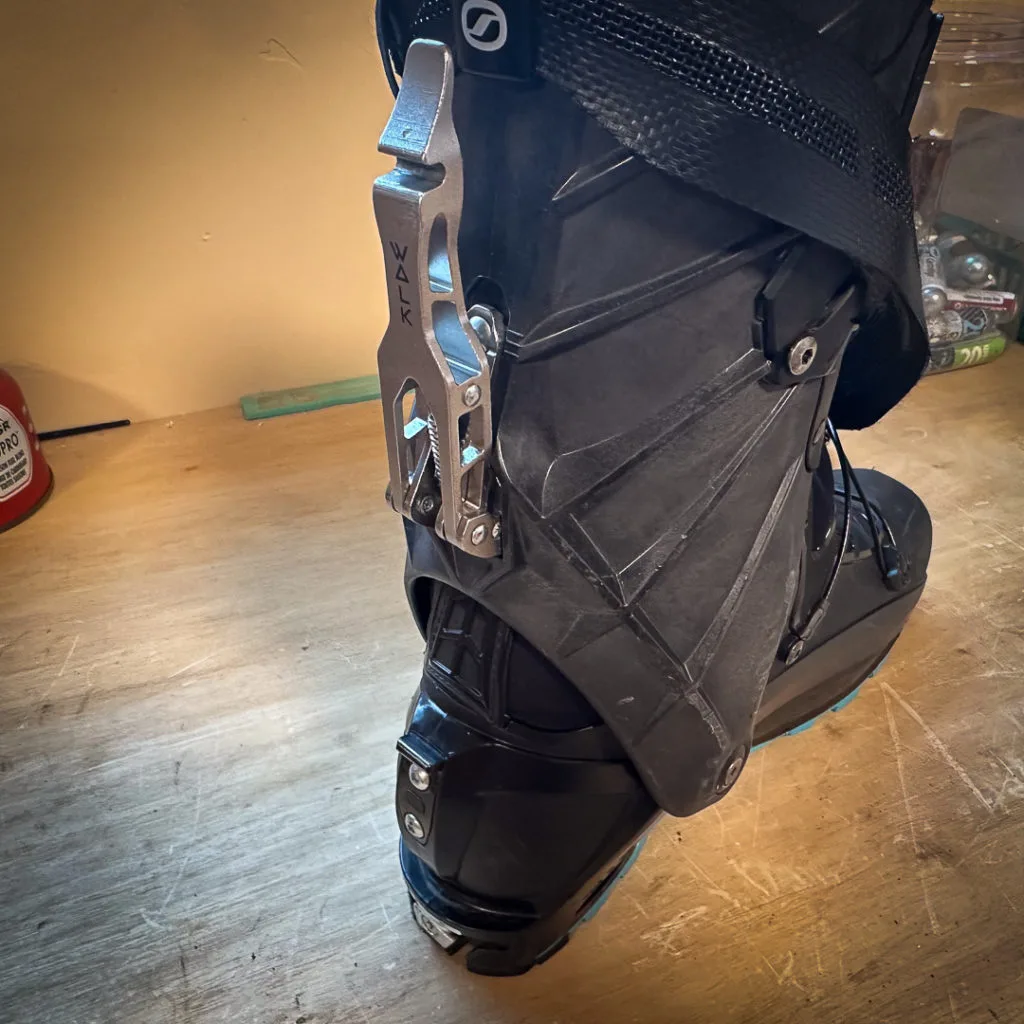
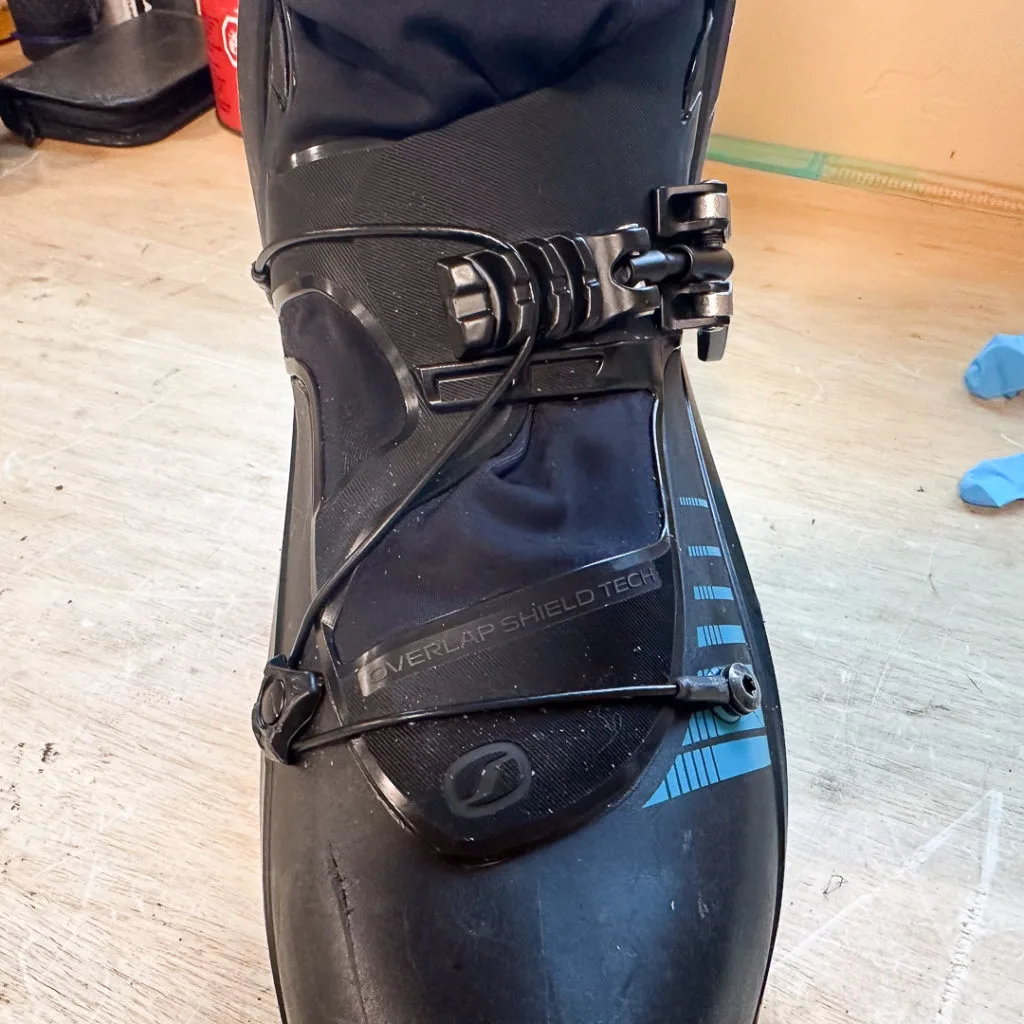
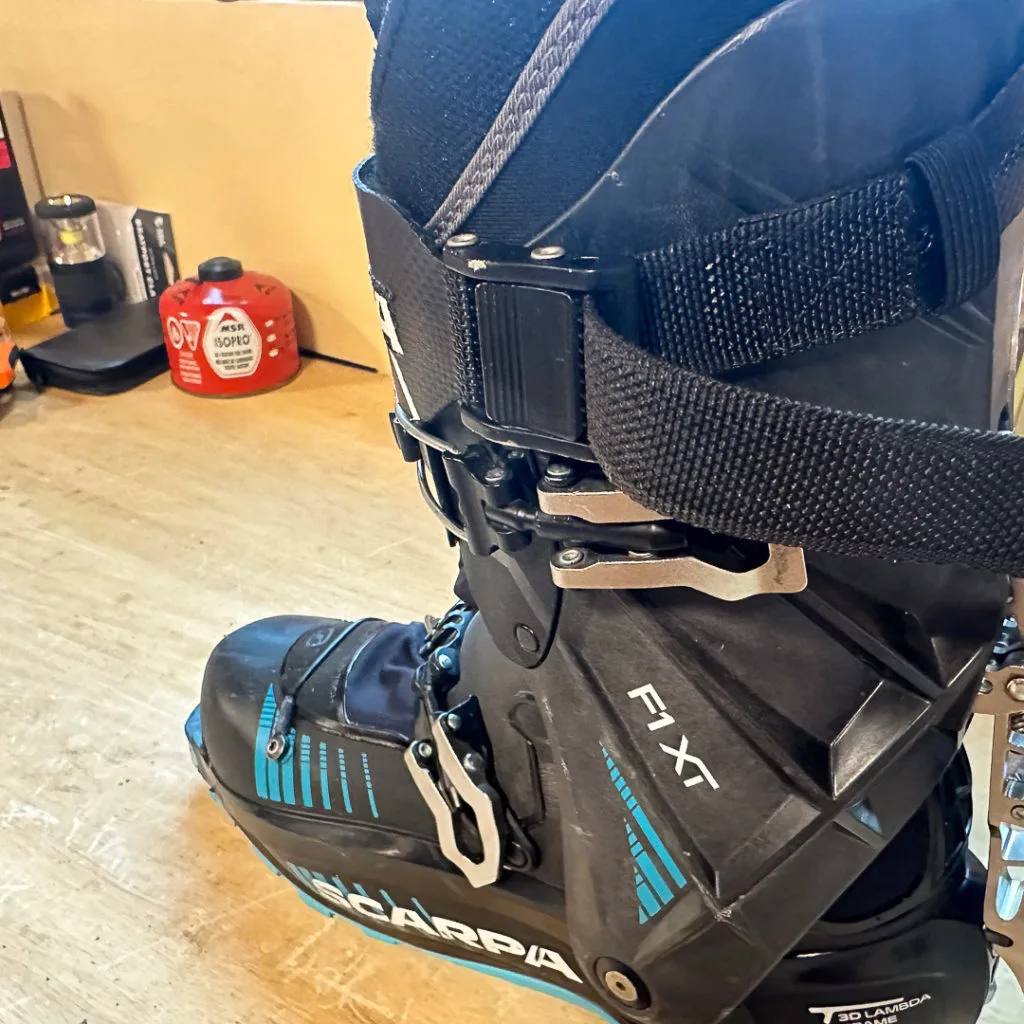
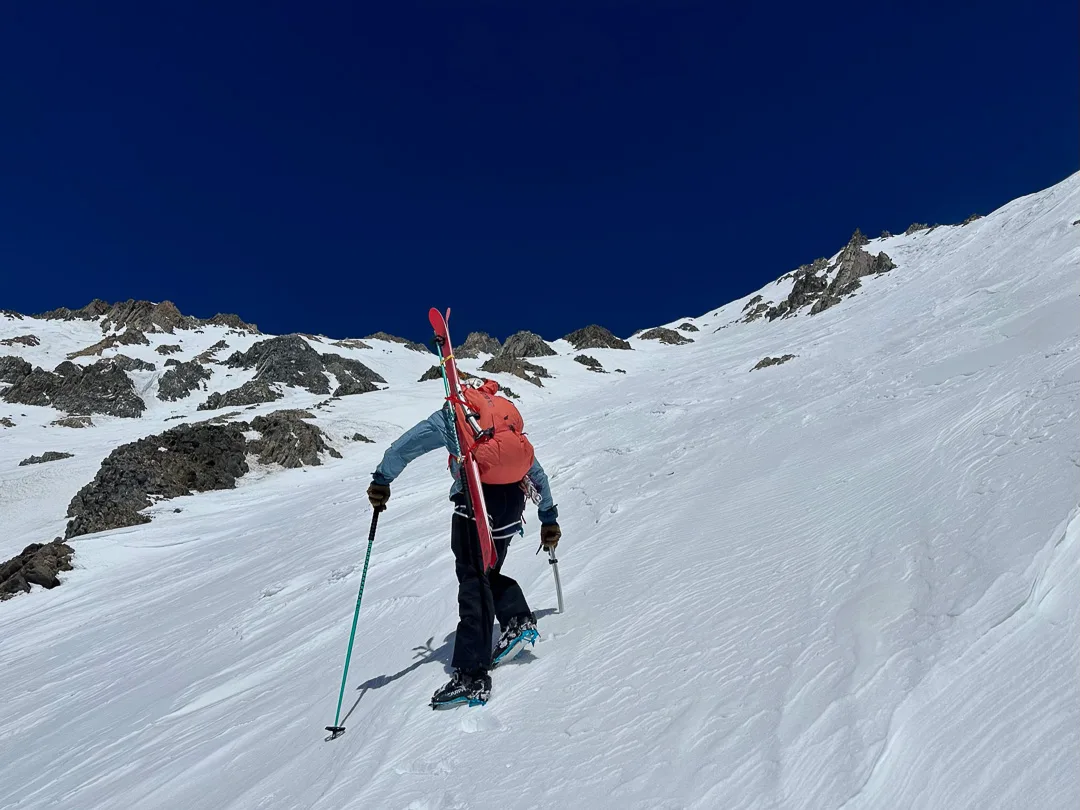
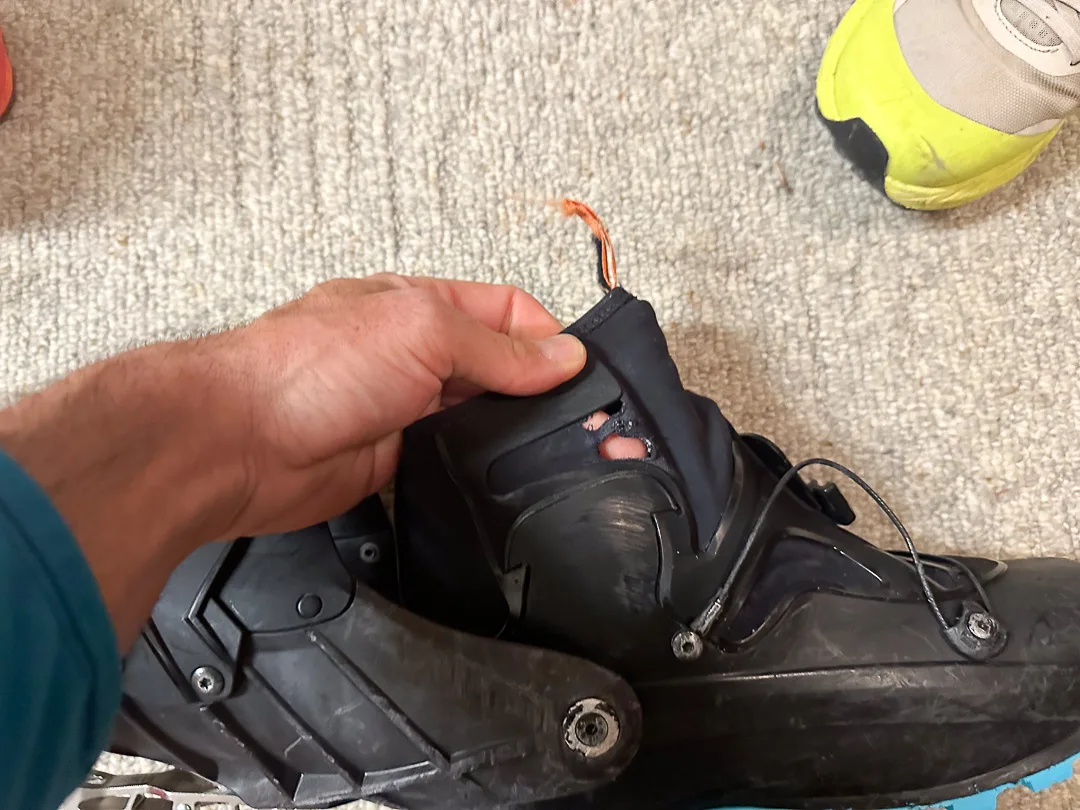
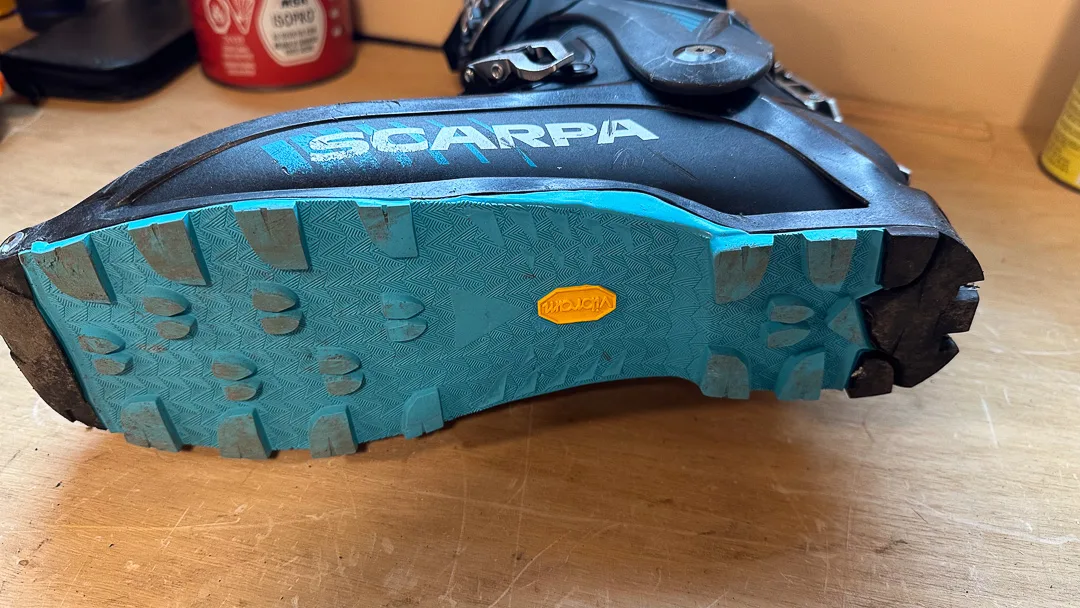

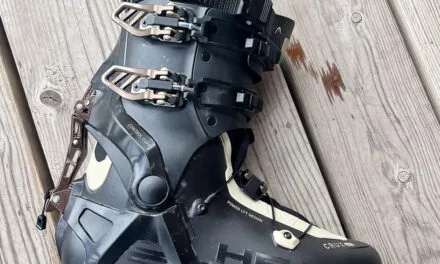
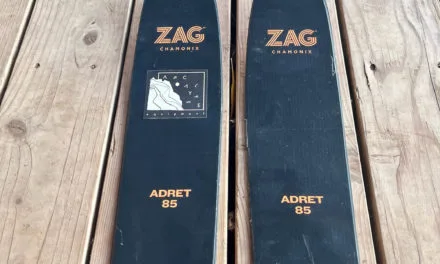
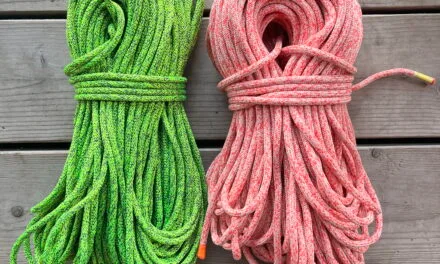
A solid, long awaited review from Adam. Enjoyed reading the differences comparing past Scarpa models and hearing the thought process when using lighter boots on expeditions!
Any liner suggestions for those of us already 30-40 days in and feeling the squirm?
The LV/9mm Intuition tour tongue is probably a good option, especially if you want a touch more foam volume.